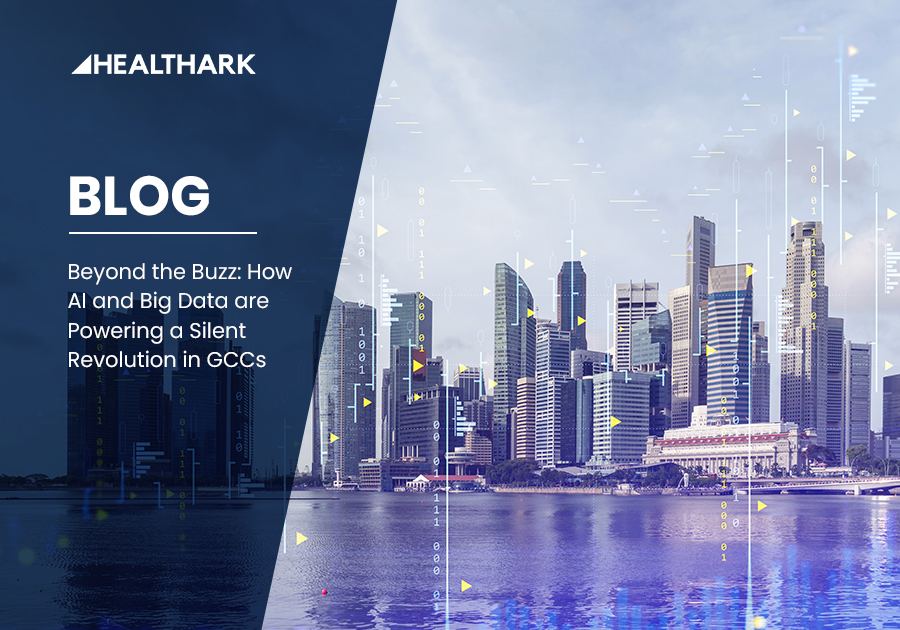Imagine a world where business decisions are not just fast, but intelligent, where global operations are not just streamlined, but predictive. This isn’t a vision of tomorrow; it’s the silent revolution already transforming how global businesses operate today.
Welcome to the new era of Global Capability Centers (GCCs) , where AI and Big Data are no longer buzzwords or future trends. They’re the backbone of a new kind of enterprise, agile, data-driven, and innovation-led.
Once seen merely as cost-efficient support arms, GCCs are now evolving into essential growth engines across industries like healthcare, retail, and finance. But how did this shift happen? And more importantly, what’s driving it?
To understand that, we must explore the core forces powering this transformation, not in isolation, but as interconnected levers working in unison:
- Automation
- Data Analytics
- Operational Efficiency
Each of these pillars builds on the others, forming the foundation for how GCCs are quietly reshaping global business models.
1. AI Automation in GCCs: From Routine Tasks to Intelligent Operations
Let’s begin with the most visible shift: automation. In the early days, GCCs were known for executing repetitive tasks at scale. But with AI integration, they’ve leapt from task execution to intelligent orchestration. This is where the transformation begins by freeing up human capital and embedding machine intelligence into everyday operations.
Take Carelon, for example. Its AI-powered claims processing shows how automation doesn’t just improve speed, it enhances service quality and scalability. The rise of chatbots and virtual assistants enables 24/7 customer support with human-like accuracy.
Today, workflow automation and Robotic Process Automation (RPA) aren’t optional; they’re foundational. But here’s where the connection deepens: these automated processes generate massive amounts of operational data.
2. Data Analytics: Making Insights Actionable
Every action taken by automated systems generates data volumes. But raw data alone doesn’t drive impact. It’s when GCCs start analyzing, visualizing, and predicting using that data that they truly become strategic partners.
This is why the second pillar, Data Analytics, is critical. Tools like predictive analytics, BI dashboards, and Natural Language Processing now empower GCCs to convert operations into opportunities. In healthcare, clinical data analysis, risk modeling, and fraud detection help ensure compliance and patient safety. In finance and legal sectors, text mining and cloud analytics bring structure to chaos.
Take Biogen, for instance. Their India GCC applies machine learning to analyze clinical trial data, identifying patterns that help optimize trial design and accelerate drug approvals. This use of advanced analytics not only reduces costs, but it also enables faster time-to-market for critical therapies.
So what happens when automation and analytics start working together? You get systems that not only act but think and improve. This brings us to the next evolution: ensuring that intelligent systems can scale without breaking.
3. Operational Efficiency: Scaling with Precision
Automation gives us speed. Analytics gives us intelligence. But without operational efficiency, both can collapse under scale.
This third pillar ties it all together. Efficiency is where AI in operations, process optimization, and service delivery automation meet to drive precision at scale.
ABC Enterprises, too, showcases this synergy by improving query resolution by 30% using AI-led customer experience automation, proving that operational excellence is the final unlock for GCC value creation.
And if there’s one industry where these three pillars come together in the most impactful way, it’s healthcare. Among all the sectors adopting AI and Big Data through GCCs, healthcare stands out as the most transformative. With its vast data pools, complex processes, and urgent need for precision, it offers a powerful example of how these technologies can drive real-world impact.

Reimagining Healthcare: The GCC Advantage
Healthcare is being transformed by AI and Big Data, with Indian GCCs leading this change. The sector’s complex workflows, vast data, and critical decisions make it ripe for innovation.GCCs are going beyond efficiency gains to improve patient outcomes. By deploying automation, analytics, and AI, they enable smarter diagnostics, personalized treatments, and data-driven care. These centers are proving indispensable in digital transformation, demonstrating how technology can enhance both medical practice and patient care at scale.
How Leading Brands Are Using GCCs in Healthcare
Let’s look at the brands that have successfully put this model to work:
- Siemens Healthineers: Uses its India GCC (6.6k employees) for AI-enabled imaging, helping radiologists make faster, more accurate diagnoses.
- Novo Nordisk: Leverages its GCC (1.2k employees) to design AI solutions for personalized diabetes care and accelerate drug R&D.
- Carelon: Embeds AI in claims and digital member services (3.6k employees), creating a seamless user experience.
- Biogen, Takeda, and Bristol Myers Squibb: Use GCCs for AI-based clinical trials and machine learning in clinical analytics.
- Healthark: Focused on AI diagnostics, R&D tracking, and compliance automation, it's setting a benchmark in global digital health transformation.
All these examples highlight a central truth: GCCs aren’t just where things get done. They’re where innovation gets built.
The Road Ahead: Smarter GCCs, Stronger Impact
So, where does all this lead us? We started with the buzz. Then we uncovered the building blocks of automation, analytics, and efficiency. We saw how healthcare is leveraging them and how top brands are already reaping the rewards. But this transformation is only just beginning.
AI and Big Data have proven their worth, but the next phase is purpose-driven application. When these capabilities are aligned with real business problems, the impact isn’t just operational, it’s transformative. If your business is looking to scale globally, improve decision-making, or deliver personalized experiences, it’s time to reimagine your GCC strategy not as a support unit but as a growth engine.
Ready to transform with AI, Big Data, and a smarter GCC?
Let’s make it happen. Connect with us.




